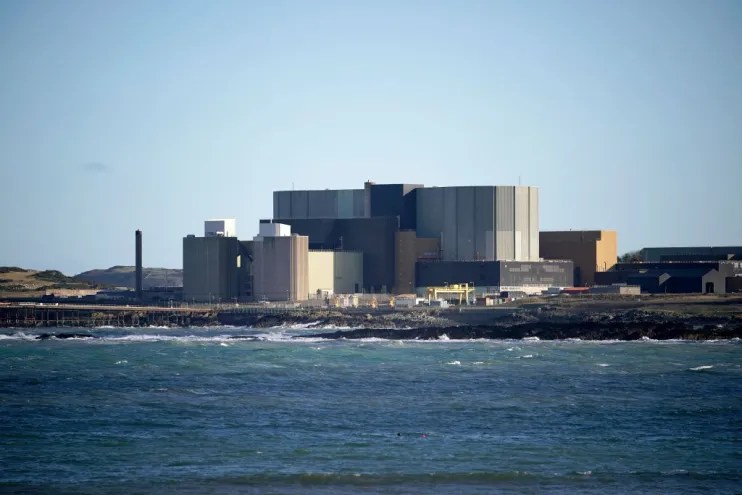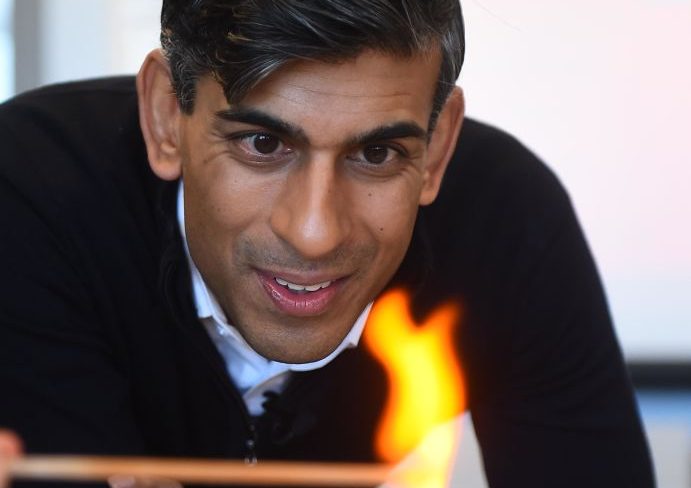Sunak: Nuclear is ‘antidote’ to UK energy security – but the road to safety is long

A “shot in the arm” generally means the quick application of a solution to cure, or at the very least aid a solving a problem. But, the government’s nuclear answer to its energy security issues could take over half a decade if today’s launch of a new sector strategy is to be taken at face value.
The road map lays out plans to develop a new GW-scale reactor the size of Hinkley C and Sizewell C, two of the biggest sector projects in Europe.
It is, across all measurable aspects, an enormous undertaking and one that comes as the UK reels from a particularly flat nuclear output in 2023 – the lowest in 40 years.
Once operable, the plant will be capable of powering six million homes and is likely to take anywhere between three and ten years to build.
Nuclear minister Andrew Bowie this week said that discussions around the specifics of the site will take place once EDF, the operator of the UK’s currently-active five power plants, have reached a final decision on the Sizewell C station later this year.
‘The perfect antidote’
Prime Minister Rishi Sunak today described nuclear power as the “perfect antidote to the energy challenges facing Britain,” while Tom Greatrex, chief executive of Nuclear Industry Association, welcomed the strategy, saying: “we will need both large and small nuclear at scale and pace for our energy security and net zero future.”
The roadmap is also expected to provide a framework for streamlining the lengthy regulations and safety assessments for developing new nuclear projects, which have drawn significant criticism in the past for dragging well past deadlines.
Today’s strategy outlines how the new plant will significant boost Britain’s nuclear capacity towards the 24 GW targeted by 2050 – an ambition that would require adding between three and seven GW every five years from 2030 to 2044.
If past is prologue, the scepticism is deserved.
Jess Ralston, analyst at the Energy and Climate Intelligence Unit (ECIU) welcomed the plans, but cited a warning of the industry’s “track record of running over budget and behind schedule” which would not help the UK’s energy security “any time soon.”

Regulatory tidy-ups would undoubtedly expedite the process of bringing the GW-scale plant to fruition, however.
Industry sources say that the changes are also designed to entice would-be developers of the major project, including the Korea Electric Power Corporation (KEPCO); one of the world’s largest nuclear utilities.
The company constructed the UAE’s four-reactor Barakah Nuclear Energy Plant in return for a 20 per cent equity stake in the project.
City A.M. understands that KEPCO has discussed a proposal to the government along similar lines to the Barakah project to create the giant power station.
The most likely location for the project is Wylfa on the Welsh island of Anglesey, as previously hinted by prime minister Rishi Sunak in September last year.
The area is unique within Europe in terms of the strength of its rockbed, ideal for complying with the enormously strict earthquake risk regulations required of a nuclear power station.
Alongside the £300m UK development programme for uranium fuel announced earlier this week, today’s strategy includes a £10m tranche to develop the skills and sites needed to produce other advanced nuclear fuels in the UK.
Two consultations, one on a new approach to siting future nuclear power stations and another on supporting the sector and encouraging private investment, are also set to be published today.
Updates on small module reactor (SMR) frameworks were largely absent from the announcement, but would-be developers are expected to shortlist for contracts soon.
Among the competing entities for the SMR contracts are U.S. firm Westinghouse Electric Corporation (Westinghouse), whose chief technology officer told City A.M. last year that the company aims to develop up to 12 projects in the UK over the long term.